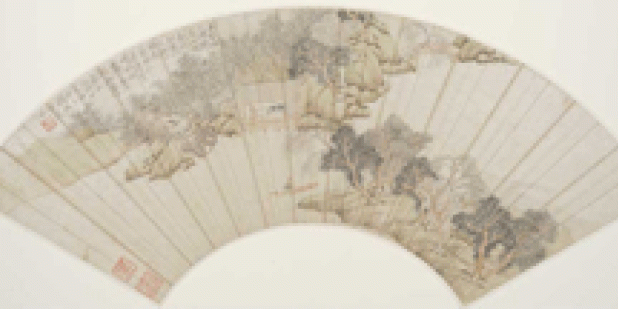Happy Lunar New Year from the USC US-China Institute!
Twilight: Chinese Paintings on the Eve of the Xinhai Revolution
The Honolulu Academy of Arts presents exhibits a selection of 19th-century Chinese paintings by three artists.
Where

This year marks the 100th anniversary of the fall of the last imperial dynasty in China, the Qing dynasty (1644-1911)—and the establishment of the Republic of China. The new country was led by president Sun Yatsen (1866-1925), who had ties to Hawai’i. He came to Honolulu at the age of 13 to live with his elder brother, a successful merchant. While in Honolulu, he studied at Iolani School and Oahu College (now Punahou School), where he was exposed to American political theory that helped him to develop the principles upon which the Republic of China was founded.
To commemorate this milestone, the Honolulu Academy of Arts presents a selection of 19th-century Chinese paintings by three artists that reveal the cultural climate of conservatism in the midst of the decline of the imperial period.
Prior to its final collapse, the Qing dynasty was crippled by rebellions. Most significant of these was the Taiping Rebellion (1850 to 1864), one of the most violent conflicts in world history. It spread throughout southern China, resulting in the deaths of as many as 20 million people, and affecting all levels of society. The artist and official Dai Xi (1801-1860), who rose to the level of Vice Minister in the Ministry of War, was in his native city of Hangzhou when Taiping rebels laid siege in 1860. After unsuccessfully defending the city, he committed suicide by drowning. Dai practiced conservative styles of painting that belied the era’s turmoil and stand in stark contrast to his final end as a victim of civil war. In his peaceful landscapes, retired scholars wander through rolling hills, encountering fishermen and other idyllic peasants content with their lot in life, as they ponder the beauty of the natural world. Dai was considered one of the leading painters of his generation, and a wide range of his work from the Academy’s impressive collection is in the exhibition.
Dai Xi is generally discussed by later art historians together with another 19th-century master, Tang Yifen (1778-1853). Tang inherited an official post in the military, but retired to Nanjing in 1830 and spent the rest of his life as a cultured gentleman, enjoying poetry, painting, and music (he was renowned for his talent on the qin zither and the flute). While Dai and Tang both painted the landscapes favored by the court since the early Qing dynasty, Tang’s paintings are infused with a self-conscious archaism that gives them a surrealistic, otherworldly quality distinct from the more subtle emphasis on expressive brushwork in monochrome ink that characterizes Dai’s work. Tang and his family were killed when Taiping rebels invaded Nanjing in 1853.
The third artist in the exhibition, Qian Du (1763-1844), was, like Dai Xi, from Hangzhou. Qian, who eventually became a monk, was a skilled poet, calligrapher, and painter, depicting scenes of scholars communing with each other and the natural world set against the gentle background of a cultivated landscape. His Cottage of Cultivated Plum Trees, showing a reclusive gentleman in a rustic hut set in a blossoming orchard in spring, is a classic representation of Qian’s delicate style.
These three painters reveal the social conservatism that ultimately led to the fall of the Qing court and the tumultuous birth of modern China a few decades later. However, while their paintings present impossibly idealized visions of a reassuringly predictable social and natural order, the tragic deaths of Dai Xi and Tang Yifen, and the downfall of Nanjing and Hangzhou, reveal the realities of the turbulent time in which they lived.—SHAWN EICHMAN, CURATOR OF ASIAN ART
Featured Articles
We note the passing of many prominent individuals who played some role in U.S.-China affairs, whether in politics, economics or in helping people in one place understand the other.
Events
Ying Zhu looks at new developments for Chinese and global streaming services.
David Zweig examines China's talent recruitment efforts, particularly towards those scientists and engineers who left China for further study. U.S. universities, labs and companies have long brought in talent from China. Are such people still welcome?






